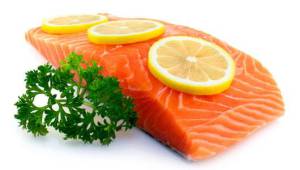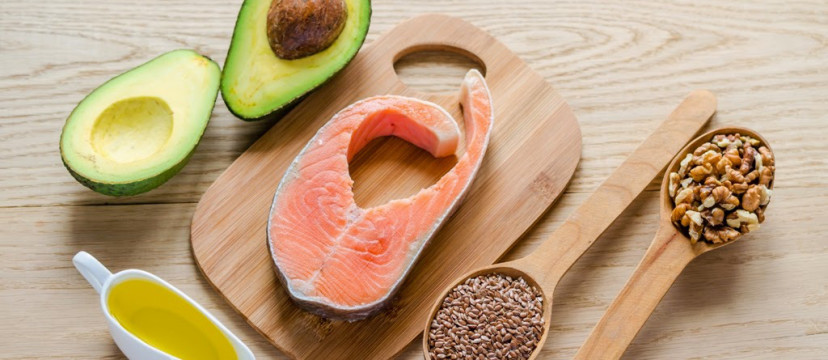By: Sarah Chmielewski, BASc (Nutrition) Candidate
Reviewed by Andrea Miller MHSc, RD
Why You Don’t Need to be Fat-Free
 There seems to be a lot of misconception that fat isn’t good for you. Fat has been getting a bad rep since about the 1980’s, when we heard that eating fat would basically, well, make you fat. But whether you’re trying to lose weight, or just simply trying to eat a little healthier, the answer isn’t to cut out all fat, but to just choose wisely.
There seems to be a lot of misconception that fat isn’t good for you. Fat has been getting a bad rep since about the 1980’s, when we heard that eating fat would basically, well, make you fat. But whether you’re trying to lose weight, or just simply trying to eat a little healthier, the answer isn’t to cut out all fat, but to just choose wisely.
Although it might be hard to believe, fat is actually good for you. Our body uses fat to store energy, insulate tissues and organs, as well as absorb and transport fat-soluble vitamins. Some fats – the good ones – can actually help to increase your HDL (your good cholesterol) and therefore reduce your risk of heart disease.
Good Fat vs. Bad Fat
 Good Fats: These are called monounsaturated and polyunsaturated fats, and they can help to lower your bad cholesterol and increase your good cholesterol, which may improve your heart-health.
Good Fats: These are called monounsaturated and polyunsaturated fats, and they can help to lower your bad cholesterol and increase your good cholesterol, which may improve your heart-health.
Bad Fats: These are the saturated fats and – the worst one – the trans fats. Research recommends that you consume as little of these fats, as possible, as they can increase risk for health problems.
Should I Be Buying Fat-Free?
The answer is – it depends. Fat-Free or Low-Fat doesn’t necessarily mean healthier, and there’s a good chance that the fat has been replaced with refined sugars or carbohydrates. This is why reading nutrition labels is important
How to Reduce the Bad Fat
- Check Nutrition Labels: Next time your are grocery shopping, check the fat content of the products you’re buying. Try to choose foods with no trans fats, and little or no saturated fats.
- Look for “Hydrogenated” in the Ingredients: This word means that the fat has been hardened, indicating that it has saturated or trans fat in it. If you’re buying margarine, choose those that are non-hydrogenated.
- Stick to Liquid, Buy Less Solid: Monounsaturated and polyunsaturated fats are liquid at room temperature, while saturated and trans fats are solid at room temperature. Try to buy more liquid vegetable oils and less butter or shortening.
- Choose Less Red Meat and Full-Fat Milk Products: These foods contain naturally occurring trans fats, and while they’re important in a balanced diet, try to replace them with other protein sources (try beans or fish) and chooser lower-fat milk products, such as skim milk, or low fat yogurt or cheese).
How to Get More Good Fat
- Make Your Own Dressings: Store-bought salad dressings are often high in saturated fats. Try making your own healthy fat dressing using olive oil or canola oil.
- Snack on Nuts: Nuts are high in monounsaturated fats, and make for a great snack to nibble on while making sure you’re getting your healthy fat intake for the day.
- Use Olive and Canola Oil: For your cooking use olive oil, and for baking use canola oil.
- Eat More Fish: Fatty fish like tuna, salmon, mackerel, or sardines are high in omega-3 fats, which are essential for heart health.
What Foods Have What Fats?
| Monounsaturated | Polyunsaturated | Saturated | Trans |
| Olive oil | Soybean oil | High-Fat Meat (beef, lamb, pork) | Commercially-Baked Goods |
| Canola oil | Corn oil | Chicken with the Skin | Fried Foods |
| Sunflower oil | Safflower oil | Whole Fat Dairy | Stick Margarine |
| Peanut oil | Walnuts | Butter | Vegetable Shortening |
| Sesame oil | Flaxseed | Cheese | Candy Bars |
| Avocados | Sunflower, Sesame, Pumpkin Seeds | Ice Cream | Packaged Snack Foods (popcorn, chips) |
| Olives | Fatty Fish | Palm oil | |
| Nuts | Soymilk | Coconut oil | |
| Peanut Butter | Tofu | Lard |
Read More At: http://www.helpguide.org/articles/healthy-eating/choosing-healthy-fats.htm


